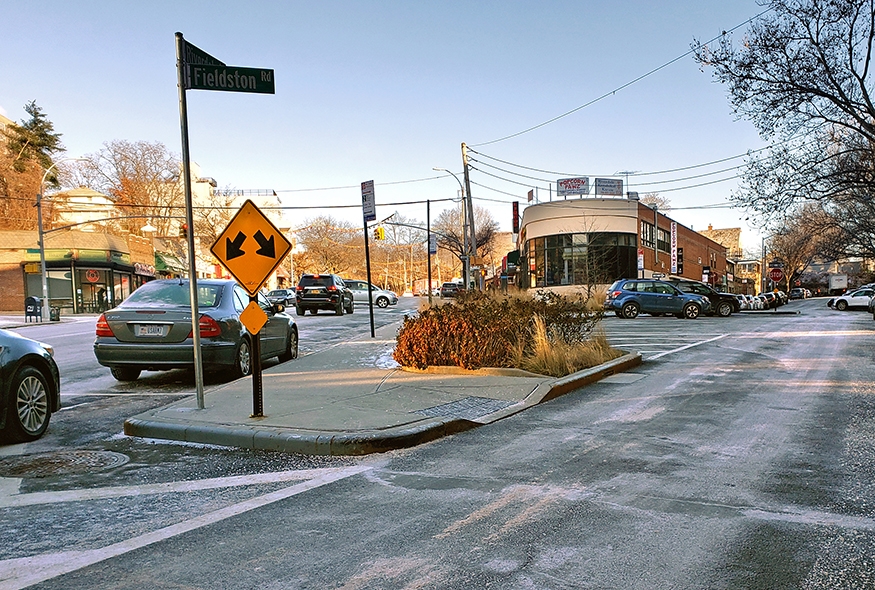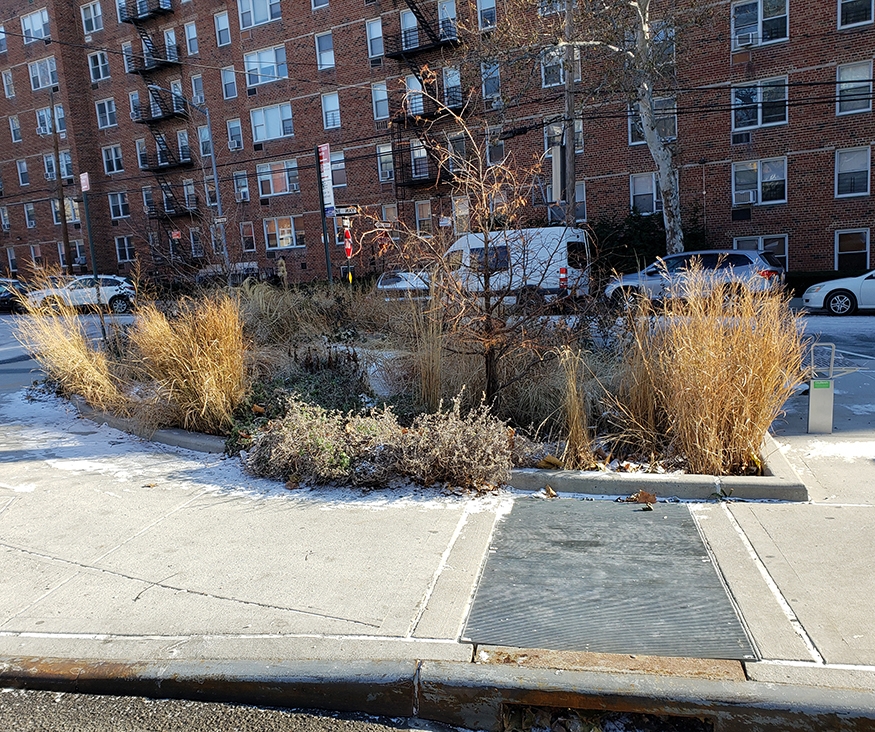Similar to DEP Rain Gardens and Stormwater Greenstreets, Median Stormwater Practices are installed within a median of a street.

Fieldston Road at Riverdale Avenue and W 236th Street, Bronx

Fieldston Road at Riverdale Avenue and W 236th Street, Bronx
Benefits
See benefits of Sidewalk Stormwater Management Practices
Considerations
See considerations for Sidewalk Stormwater Management Practices
- Raised medians, whether paved or planted, are more suitable for stormwater management than other types of medians such as barrier medians and painted medians
- Median stormwater management practices should be a minimum of 12 feet in width and consideration should be given for maintenance vehicle access
- Avoid in areas of with high sediment loads or other types of trash and debris
Application
- In areas where sufficient drainage can be directed to the median
Design
See design guidance for Sidewalk Stormwater Management Practices
See design guidance for Raised Median (Curb Height) and Raised Median (12-24-inches)
- Similar to Stormwater Greenstreets, median stormwater management practices require site-specific design and review
- In locations where the roadway is pitched towards the median, curb cuts may be used to divert stormwater to the median stormwater management practice
- For roadways that pitch away from the median, stormwater can be diverted to the median stormwater management practice through the installation of new or modified catch basins and subsurface piping, with DEP approval. Designers should consider the size of the impervious area that will be diverted to the practice as part of the cost analysis for this type of treatment
- Large median stormwater management practices may be split into sections and hydraulically connected using underground pipes to avoid impacting surface programming or landscaping
- For vegetated practices, a minimum ponding depth of 3 inches at the center of the median, with a maximum 3:1 side slope around the edges, is recommended
- Consider permeable pavement wherever safe and feasible. See Permeable Interlocking Concrete Paver (PICP) and Precast Porous Concrete Panel in the Materials chapter
Plants
See Plant Finder

